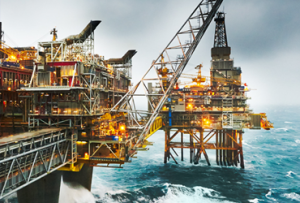Working on an oil rig in the UK or further afield can prove very lucrative for individuals. Long hours of high pay for weeks on end is definitely something to be coveted, but unfortunately working on an oil rig will always be a risky enterprise and accidents inevitably.
Thankfully, fatal accidents are an increasingly rare occurrence when it comes to oil rigs. The most recent incident came in 2017, when an offshore rig populated by Norwegian BP employees left one individual dead. On an oil rig there are many components at work, and you’re essentially channelling flammable materials all around you.
Each time a disaster happens, engineers learn something new about how to prevent disasters and make the oil rig as a whole a safer environment to work in. Here we’re going to take a look at some of the most famous oil rig disasters of all time and their statistics. Don’t worry though, oil rig accidents of this magnitude are few and far between, so if you’re thinking of entering the profession don’t let it put you off!
Sea Gem Disaster
The Sea Gem Disaster was a dark day for the British gas and oil industry, marking the capsize of the nation’s maiden drilling platform based off-shore.
There were 32 crewmembers aboard the Sea Gem, but in December 1965 the legs of the rig buckled under the pressure of the North Sea and caused it to sink. As a result, 13 were killed and five more sustained serious injuries. Thankfully, RAF and civilian ships were able to rescue the remaining employees of the disaster before any lives were lost.
Metal fatigue was blamed for the incident, and as a result it was agreed that in future regular inspections would take place to avoid a repeat of such an incident. Alas, the Piper Alpha Disaster was yet to unfold and once again change the face of oil rig safety in Britain.
Seacrest Drillship Disaster
The South China Sea was the location of the Seacrest Drillship Disaster, which unfolded a little south of the Thai capital Bangkok. Unfolding in 1989, the drillship was capsized in the event of a natural disaster – Typhoon Gay.
Waves of 40 feet were recorded on 3rd November 1989, which was the day of the incident. However, some degree of blame has since been apportioned to a higher centre of gravity that was considered not entirely safe and potentially not seaworthy. In addition, events unfurled so quickly that there was no time to send a distress signal and request help.
Unfortunately, the Seacrest Drillship Disaster proved to be one of the most statistically lethal accidents in the history of the industry. There were 97 crewmembers aboard the ship, which had been in use for over eight years, and just 6 of them survived – rescued by the Thai military and passing fishing boats once a helicopter spotted the capsized ship.
Ocean Ranger Oil Rig Disaster
This 1982 incident unfolded in February 1982. It was a storm that caused the problem, with severe winds that reached up to 120mph forcing the Ocean Ranger oil rig to capsize on the Newfoundland coast in Canada – under waves that reached heights of 65 feet.
Despite the Ocean Ranger being one of the largest rigs in the world at this point in time, it could not withstand the pressure of Mother Nature’s onslaught. A window was smashed, which allowed water into the rig – water that critically reached the ballast control room. It took around two hours before the damage was noticed, and by this point it was too late for anything to be done about the situation.
Attempts were made to abandon the rig, with only 36 crewmembers managing to make their escape on a solitary lifeboat. 20 employees ended up in the water before the oil rink even finished sinking, and once it capsized in full many more souls were drowned. In the end, 84 people lose their lives in the Ocean Ranger Oil Rig Disaster.
Piper Alpha Disaster
The most infamous oil rig disaster of all time occurred in July 1988, when the Piper Alpha Disaster claimed 167 lives after a gas leak caused a major fire. Fire remains the most common cause of fatal accidents in such settings, followed by slips, trips and falls, falling objects and electrical faults.
The leak stemmed from a condensate pipe, which had earlier been removed as part of a standard maintenance job. While the open area had been sealed as a temporary measure, which was perfectly safe in principle, the work was not reported to the night shift workers. When another gap pump on the rig tripped later that evening, a crewman switched on the previously repaired pump and gas began to seep throughout the oil rig.
This was only going to end one way – numerous locations throughout the rig began to catch fire, and eventually the blaze raged for over three weeks. The crew abandoned the oil rig, but only 61 people survived.
The severity of the Piper Alpha Disaster sparked a complete rethink of the safety profile of the gas and oil industry. The Offshore Industry Liaison Committee trade union was forged as a result of the incident, and a statue memorialising those who lost their lives still stands in Aberdeen.
Perhaps most importantly, comprehensive safety assessments are now conducted in every offshore workplace. Most oil rigs will bring in external experts to ensure that everybody is able to complete their tasks in a safe and secure manner.
This means that you can rest assured that, despite being a high-risk environment, working on an oil rig is comparatively secure – just ensure that you follow the appropriate safety protocols laid out by law and your employers.

